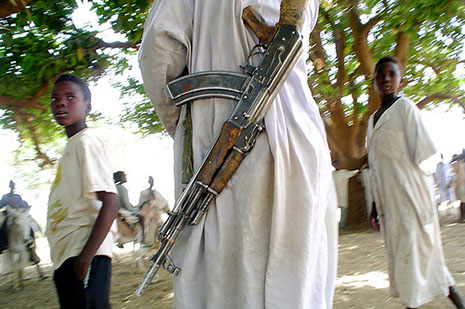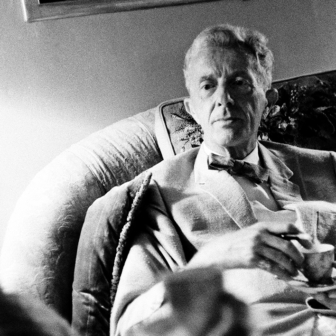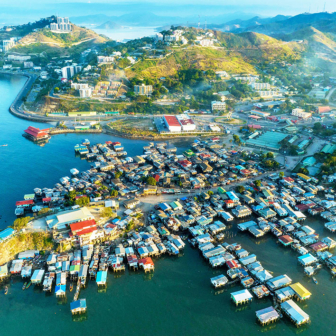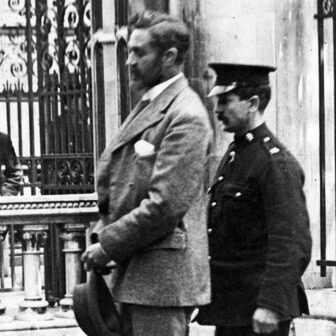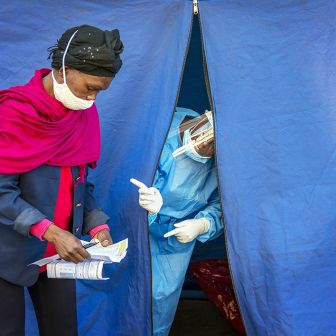CALLING from the top of a rubbish dump in the earthquake-destroyed city in Muzaffarabad, I could connect by phone to Khartoum. And from the foothills of the Himalayas, overlooking the Vale of Kashmir and the Neelum and Jhelum rivers, I accepted a job in Darfur.
“Time to move,” I had been told by wiser heads. “Once the emergency phase is over the politics starts, development intervenes, and nothing happens.” During the earthquake, the mantra of relief workers was “Don’t make a catastrophe out of a crisis.” The real catastrophe was elsewhere – no matter how bad the destruction and loss of life in Pakistan, it was a different order of magnitude to the catastrophe of Darfur. All disasters and emergencies are to some degree “man-made”: in Pakistan, we saw complicity through poor construction standards and a sluggish government response.
In Darfur the decision had been taken by Sudan’s president and senior leaders to kill, rape and displace, systematically and indiscriminately, whole groups of people based on an increasingly racialised conception of ethnicity. Belatedly, and after the worst of the killing spree was over, the international community had turned its head towards Darfur.
From Islamabad I flew to Melbourne, wincing as the customs officer in Lahore stamped my passport with a red X and the words Do not readmit, and from Melbourne to London and then back again across the globe to Dubai, Amman and Khartoum. I sat next to young Americans mostly on this Middle Eastern leg – some naive and some sceptical, the fresh-faced and the haggard, mercenaries and Wilsonian internationalists. It was my reading matter that started the conversations on the plane – and ironic, perhaps, that George Orwell had become hallowed ground for these illiberal interventionists going to reshape the Middle East.
I flew on, transcending worlds and time while watching videos in my metal tube, until fifty hours after I started, dots of houses emerged from the expanse of desert tan, clinging tightly to the confluence of the White and Blue Niles. From the air Khartoum came into view – not the resonant place of my imagination conjured by the words Omdurman and dervish, the place of heroic imperial last stands, the literal and metaphorical “heart of Africa” – but a neat, modern city arranged in lines, perched precariously on the edge of vast waves of desert tending massively and irrevocably to the interior.
“CALL me Ernie,” he said. “My name’s Hernando, but all the guys in Geneva call me Ernie – do you know the guys in Geneva?”
I regretted that I didn’t know the guys in Geneva, and it was a refrain that echoed again and again as my newly arrived colleague Ernie and I made our way from the hotel to the Khartoum office and back again. We had both been sent to the “operation” in Sudan, knew no one, and had little conception of what we were actually supposed to do. After a brief meeting with my supervisor, whose only words – “I see you’ve made it” – were uttered without looking up between emails, I remained unenlightened.
“Don’t worry,” Ernie reassured me when I wondered how long we were going to sit around in Khartoum, “the guys in Geneva are all over it.”
But the days passed slowly as I went through endless rounds of briefings. A political adviser from the United Nations took me into the organisation’s map room, where I stood gazing at the neat, sanitised cartography of war. Maps of flat, empty space marked with crosses to indicate major battles, circles for cities, and triangles to show refugee camps. Dotted lines marked possible roads whose existence and accessibility no one could really guarantee. The only permanent fixtures were thick black lines representing international borders, labelled Libya and Chad – a misplaced assertion of certainty, as I discovered, because these borders meant nothing in a conflict that engulfed the Sahara, a conflict which found its geographical echo in drought, displacement and gradual desertification. The movements of time, politics and a changing climate had little use for lines on maps. Layered onto these humanitarian maps was a political map which showed spreading, amorphous shapes that represented estimates of areas under the control of a dozen pro-government and rebel groups – expanding, contracting, realigning with the cruel exigencies of irregular desert warfare. “Nobody really knows what they represent,” said the political adviser. “It’s the best we can do but most of it’s made up in Khartoum.”
As I was going into the “field,” I was subjected to a comprehensive security briefing. I was told how to walk around a car before getting in and what to do if a lion suddenly appeared. There had been a vast and unexpected migration of animals across the continent that year and I was to stay clear of marauding gazelle. Snakes were generally considered bad, and the gung-ho security adviser discussed the relative merits of “going it” if attacked by gunmen on a motorbike while driving. Clearly living in a world of action movies, he thought the best approach would be to ram them. He had never actually been out of Khartoum, he confided. The SAS motto Who dares, wins was clearly an inspiration to him, although he’d had to adapt it for civilian humanitarian workers. As he sent me on my way he slapped me on the back, saying, “Who lives, wins!”
SUDAN appeared further and further away. Ernie had managed to find himself a filing cabinet and a desk, where he spent his days furiously busy with reams of paperwork. Our newbie camaraderie diminished to a tight-lipped grunt over coffee in the morning at the hotel. Lunchtime walks revealed empty, quiet streets, and aside from the fine clinging dust on my boots, I found nothing beyond an elegant pizza restaurant with a garden setting and a French-speaking chef. There were shops and supermarkets; an international embargo meant that even though the banking system did not operate, the shelves were overflowing with imported produce, priced in US dollars. In the centre of town, a curved plate-glass tower modelled on London’s Gherkin had just been finished, shunning both gravity and right angles in its ultra-modernity.
After work I was taken by colleagues to a cafe by the Nile. Surrounded by lush ferns we sat outside with Khartoum’s elite, watching the sunset in the thick, humid heat of the early evening, cooled by water vapour sprayed across the garden, and ate freshly made sorbet. “This is the most peaceful city in the world. There is no crime here,” someone said without a trace of irony.
And yet everything around was evidence of massive state-sponsored criminality. The wealth of Khartoum and the immense prosperity of its sorbet-sucking residents were the product of decades of economic, political and cultural strangulation of the rest of the country by Sudan’s riverine elite. Shortly before I arrived, the International Criminal Court had issued arrest warrants for senior cabinet ministers, including the head of the Orwellian Humanitarian Aid Commission, for genocide and crimes against humanity in Darfur. This was a prelude to the ICC’s subsequent indictment of the country’s head of state, Omar al-Bashir, for the same crimes, authorised by him but carried out by radicalised local militias called janjawiid (a compound word derived from the G3 rifle, jawad , or horse, and an Eastern Sudanese dialect word for outlaws). These turbaned “devils on horseback” had contributed to the deaths of between 350,000 and 450,000 people, with another 3.5 million – more than half of Darfur’s population – displaced and in need of humanitarian assistance. “You are informed,” wrote janjawiid leader Musa Hilal to one of his subordinates in Darfur, citing orders from President Bashir himself, “that directives have been issued... to change the demography of Darfur and empty it of its African tribes.” It was becoming clear that the “guys in Geneva” really didn’t have a clue.
AS WE FLEW over El Fasher airport in North Darfur in a Cessna C-130 on a UN Humanitarian Air Service flight, the military realities of the maps I’d studied earlier in Khartoum – with their lines, legends and amorphous colouring of the political landscape – began to dawn. On the edge of the runway, new helicopter gunships sat ready for action, but were dwarfed by an enormous white plane.
“That’s the Antonov,” the South African pilot muttered as we landed, and I made my way past bored guards and towards a small shop selling gleaming lines of cold Pepsi.
The Antonov was the white elephant of the war in Darfur: vast, lumbering and symbolic of the regime’s indiscriminate killing. It was a Soviet-era military cargo plane designed to carry tanks, but in Darfur it was used as an instrument of terror. It flew over villages dropping bombs that were rolled out from its giant hold by hand – killing that was at once industrial and primitive. It was painted white – the colour of humanitarian agencies – and before I arrived its wings had been marked with the letters UN, showing the regime’s total disregard for life, law and the work of aid organisations. Each evening at dusk, from the concrete room where we worked, all conversation was drowned in the roar of its engines as the Antonov took off for another bombing run from the same airstrip used to bring in humanitarian workers and supplies.
The Antonov instilled terror and targeted not rebel combatants but clusters of villages, food stores and water wells, but the truly deadly assaults came from militias armed with “technicals.” In the early days of the conflict the militias had been mounted on horses or camels, but as the war progressed Khartoum armed them with technicals – Land Cruisers with the top sawn off and mounted with a machine gun. They were used with the Antonov in coordinated attacks on civilians. These attacks were aimed at wiping out not only people but their means of subsistence as well – “to change the demography,” as Musa Hilal had put it. “They kill us because of our black faces,” said one man I spoke to months later in a village called Doruk, which had been attacked.
FOR THREE weeks before the mission, I listened to the sounds of war, closed up in concrete offices, protected by floodlights, barbed wire and the flags, colours and protective heraldry of the international community. Curfew at seven, radio check at ten – This is Foxtrot Mike loud and clear. At six each evening, as I finished work at the office, all thoughts and conversations were drowned by the raw noise and aggression of the Antonov taking off for its evening bombing run.
During the day, I inhabited a small, hot, concrete bunker with blocked-in windows. From this makeshift office I worked as a “protection officer,” trying to gather information about population movements and the humanitarian conditions of people displaced by the Darfur conflict.
Driving home one evening through a back street near the market, I turned suddenly onto the main road and pulled up sharp as a technical accelerated past. Camouflage, rocket launchers, guns, and the shouts of men moving out of town, seeking a kill. A roar of noise went up – a full-blooded bark simultaneously bursting from twenty men on edge – as the mounted machine gun slowly turned towards the car. And in the car’s cabin, paralysis took hold and my brain went numb; my white and useless strapped-in limbs drooped heavily into the seat. A distorted voice – my own – wrenched in through the din with instructions for every muscle and every action. Move slowly, put your hand on the gears, put the car in reverse, move slowly, drive back, go slow, get back, shrink away, retreat. And as they receded, the sweat came, the shaking and the nausea.
At dusk, the firing started from outside town. In our compound, recently equipped with satellite TV, men watched Milan Fashion Week to the irregular detonations from the firing range until it was time for the insurgency channel – amateur videos of militia violence filmed in Iraq, watched by aid workers in Darfur. Parallel realities that only intersected on one occasion when a stray bullet that had been fired into the air smashed through the roof and embedded itself in the concrete floor of the TV room.
Despite the sounds around us, Darfur was remote. We were locked away in offices and compounds, barely allowed out because of the passing traffic of militias and the endless fluctuations of alliances between local commanders and factions. Sudan rarely imposed. The billowing dust from a sweeper’s broom in the morning, the rich Arabic coffee in the afternoon, took me temporarily away from maps, computer screens and reports of fighting, casualties, people on the move.
“They’re trying to fuck us over,” my boss would say each morning, but she was referring to our colleagues in Khartoum.
I WAS INVOLVED in two major field “missions,” as humanitarian operations were called, in a language that merged military with missionary terminology. These involved organising refugee convoys from conflict-affected areas on the Chad–West Darfur border and leading assessment teams in search of recently displaced people in North Darfur in an area called Dar Zaghawa. Initially, the intent had been to monitor the humanitarian conditions of people returning to their places of origin following the signing of the Darfur Peace Agreement, or DPA, in 2006. This peace was ineffective, however, and was ignored by all sides. It had further split Darfurian opposition groups, making successive peace negotiations more difficult, and had provided an inadequate basis for an African Union intervention force that lacked the resources, mandate and military cohesion to alter the course of the war. Despite initial high hopes, it had been mired in bureaucracy and could not even provide effective protection to women collecting water in camps – a daily task that took women outside the nominal security of the camps’ perimeter and brought with it the risk of rape, murder and abduction – let alone for the dispersed rural civilian population in an area the size of France.
As a result of its failings, the African Union force had become so detested that Darfuri rebel groups had started to attack it. Some weeks after I arrived, fifteen Senegalese soldiers were killed in a raid led by the one Darfuri rebel organisation that had actually signed the DPA and had earlier supported the establishment of a peacekeeping mission. It was, as one military observer noted, “classic peacekeeping in an environment so wildly not at classic peace as to be ridiculous.” For the people of Darfur, there had been no peace and no one was going home. In a war frequently referred to as “our Spain,” the efforts to end a mass crime that toxically fused a racialised state ideology with brutal power calculations lacked international resources, commitment and sincerity.
What was happening in Darfur was new and represented a vicious unravelling of the old order. In the 1980s, the academic Alex de Waal had travelled to Darfur and met with a leading tribal elder called Sheikh Hilal Musa, father of the notorious militia leader Musa Hilal. In a tent sparsely furnished with saddles, carpets, water jars and spears – the possessions of a life of desert nomadism – the old sheikh had recounted a “moral geography” of the land. This was a grid, drawn in the sand, which showed an interlocking pattern of land use and migration. Nomads and camel herders had travelled along transhumance routes which occupied certain squares on the grid, while agriculturalists occupied others. When the nomads moved into an area they tended it well, looked after gardens, protected villages and left it safe to return. Similarly, agriculturalists allowed access to grazing lands as the herders moved from pasture to pasture with the changing seasons. Gifts were exchanged – on arrival a goat would be sacrificed for the herders by the agriculturalists, and on their departure a camel would be given to the agriculturalists in return.
The linguistic, religious and ethnic make-up of Darfur reflected this cooperation. An independent sultanate until 1916, when it was annexed to the Anglo-Egyptian Sudan, Darfur had developed its own separate social fabric and state identity. Arabic had become the common language, in addition to the local tribal languages, and intermarriage was common – making the region almost uniquely cosmopolitan. There was a strong tradition of Sufi Islam, which syncretised Muslim and local traditions of religious practice. “African” and “Arab” were not meaningful divisions in Darfur and even Sheikh Hilal, despite his casual racism and assumptions of the superiority of his tribe and nomadic way of life, boasted about his “African” antecedents.
By the 1980s, however, his world had ended. Drought, desertification and famine had disrupted the earlier moral geography, and as the great camel herds began to die off from a lack of grazing land, nomads came into conflict with agriculturalists while searching for new pastures. In some cases they attempted to abandon their herds and started to farm as an alternative livelihood, but this met with resistance from already settled populations. Nomadic tribes that would later be identified as “Arab” and associated with the janjawiid were, at the outset, also victims.
While conflict mounted internally, exacerbated in part by a changing climate, Darfur was caught in the middle of the geopolitics of Khartoum, Tripoli and N’Djamena. In Khartoum, increasingly Islamist governments took office. A military coup brought Omar al-Bashir to power in 1989 and the regime increasingly defined itself in opposition to the predominantly Christian and animist South, in an ongoing war that left more than two million dead, and promoted a strict adherence to a racialised conception of Islam. At the same time Libya’s dictator, Colonel Gaddafi, embarked on the creation of an “Arab belt” across the Sahara. Central to this geopolitical project was control of Chad. Darfur, which borders both countries, was used as a base by Libyan-backed Chadian militias fighting against the government in the capital N’Djamena. Gaddafi sponsored the establishment of the Islamic Legion, consisting of Chadian rebels and discontented Sahelian Arabs, who were displaced from their lands and livelihoods by drought and local conflict. The Islamic Legion was trained by the Libyan regime in a toxic mix of desert guerilla warfare and a virulent form of Arab supremacism. The defeat of the Islamic Legion in 1988 had a profound impact as its fighters returned to Darfur and formed the Arab Gathering – an armed political movement ostensibly organised to protect the interests of a disadvantaged minority within Sudan, but possessed of weapons, training and an ideology of racial supremacy.
As an “Arab” identity was being cultivated by extremist movements in Tripoli and Khartoum, an “African” identity was also being manufactured. The resistance leader of South Sudan, John Garang, sought to alter the course of the North–South war by enlisting non-Arab tribes (who were a majority of the overall population of Sudan) to a common cause with the South, whose sub-Saharan identity and predominantly Christian religion were more easily identified as “African.” This initially had little traction in Darfur, as the early stages of Khartoum’s Islamist turn promised to include all good Muslims – defined by conformity with increasingly strict religious practice rather than by race – in the affairs and rewards of the state.
By 2000, however, it appeared that this offer was a sham.
When Bashir took power in 1989, he replaced this inclusive version of Islam with one that emphasised the primacy of his own and Khartoum’s Arabised elite. The regime in Khartoum did not invest its resources in Darfur as had been promised and the Darfurian opposition produced a “Black Book” which documented this systematic political and economic neglect along racial lines. In this context, John Garang’s offer of “African” or “non-Arab” solidarity took on greater political appeal. In 2003, two Darfuri opposition groups – the Sudanese Liberation Army, or SLA, and the Justice and Equality Movement – united and attacked a government base in El Fasher to instigate armed opposition to the regime in Khartoum. Already massively in debt and fully committed to the war with South Sudan, Bashir responded to this new threat by exploiting Darfur’s already ideologically radicalised and alienated groups to create ruthless local militias prepared to kill for money and land: the janjawiid. This was, Alex de Waal has written, “counter-insurgency on the cheap” and represented a radically different, nightmare world from that in which the eighty-year-old Sheikh Hilal had grown up and in which his son, Musa Hilal, was to become one of the most vicious protagonists.
MY FIELD notes from this time recorded, in terse shorthand form, this radicalisation of the war in Darfur and reflected a complex society that had collapsed from both external and internal pressure. As we travelled further and further into Darfur, passing burned-out villages and interviewing people hiding in dry wadis (seasonal rivers) or around clumps of trees, fearing attack from the passing Antonov, my notes became increasingly cryptic. In handwriting shaky from the road, smudged with dust and sweat, a grim record of people’s marginal survival was scratched into the page. An “X” in every village indicated the last attack, while number and downward arrows indicated the levels of population decline. This survey of living conditions ceased to reflect any individuality of person or location and assumed instead an almost bland sameness that emerged from the shorthand of destruction:
Last X 3 months ago. No food, some berries. Water 6hrs by donkey. Living in forest, animals stolen. Families separated. Majority killed in X. Currently living in Wadi. Water holes bombed/pumps destroyed. Ongoing JJ [janjawiid] attacks. Primary/Secondary displacement. Push factors. Antonov seen yesterday at 4 pm – live in constant expectation of attack.– Shardaba
– Songoli
– Gurbuhir
– Sonjabak........ Empty/destroyed
– Argao
– Urubukir
GoS [Government of Sudan] harassment – women at risk when collecting water. Seven women from this village have disappeared. Access to water 6 hours by donkey. In nearby Ana Bagi, 4 girls had recently disappeared because of attacks by the GoS forces.
Orschi – attack on school 3 months ago also problem of being near the main road which is controlled by GoS and JJ – animals looted and now no access to markets. Living in forests on seeds and berries and staple millet. They might eat meat every 2-3 months, but have given us one of their goats for dinner. In Inni, there are attacks every week. Last week the JJ took 62 cows and 5 camels. JJ kill/loot.
Gita – Evidence of malnutrition – no agriculture, no animals. Former land now a JJ base and the village and families have become separated and many still lost.
Hilalia. The Antonov attacked one week ago, and people are now living in the forest. They had been in camps in Chad but were also attacked here on a weekly basis by Chadian rebels and the camp itself was located in an unstable area with little water. They are safer here than in the camp although things are clearly difficult. The water well was bombed and daily water collection takes 5 hours by donkey – a task that is done by the women. The SLA control the area so, currently, this is relatively safe. But – there is a nearby GoS position and one week ago a village woman was kidnapped and raped. There was SLA “retribution” and “an exchange” between GoS and the SLA at the water point. The wells, however, are only full during the rainy season and dry up during the summer. Food is also scarce and the villagers are dependent on food from camps in Chad where some are still registered or through extended family/tribal connections – 5 days away by donkey. Food collection is also a women’s task.
Haramumba – fearing constant attacks water is collected at night.
Ana Bagi – located near GoS checkpoint on a hill: a constant threat. There was a rape ten days ago.
As Darfur fades from the headlines, overshadowed by the independence of South Sudan, and official assertions from the United States, Britain and the United Nations that the situation has “stabilised,” the destruction of this starkly beautiful desert society continues. While the killing and displacement reached their peak in 2004 and have declined since, the Antonov still flies. The situation is perhaps more complex as, in addition to state-sponsored violence, the Darfuri rebel groups have begun to turn on each other and unity is further away than ever. But Darfur remains a marginalised part of North Sudan – still governed by a military elite and underpinned by a profoundly racist ideology. Despite ICC indictments Bashir remains in charge, uncensured by other African leaders and in control in a capital still booming from oil revenues.
Aid agencies remain on the ground providing vital supplies for the nearly four million people who have been displaced, but this task is routinely made almost impossible by the regime’s total lack of cooperation and is still overseen by the ICC-indicted Humanitarian Aid Commission. Peace for Darfuris – as for other minorities within this ideologised rump state of North Sudan – remains as elusive as ever. And what has been lost, apart from hundreds of thousands of lives, is a society whose fusion of Arab and African cultures representing East and West, Saharan and sub-Saharan, animist and Muslim, may well be impossible to restore. As another old sheikh lamented, a few days from his own eightieth birthday:
The Arabs came here looking for pasture, and when the grass was finished they went back. They used up our grass, but they took good care of the gardens and the people. There were no robberies, no thieves, no revolution. No one thought of domination, everyone was safe... Now there is nothing but trouble all over Sudan. There is no government, no control. Look around you. What do you see? No women, only armed men. We no longer recognise it, this land of ours.
For Orwell, history notionally ended in the 1930s with the defeat of Republican Spain. Seventy years later, a history of pluralism and relatively peaceful accommodation has ended in Darfur in a parallel world of extremist ideologies and the inhuman calculus of political power. •
